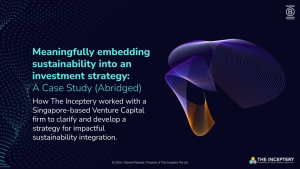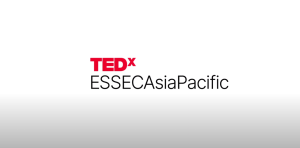A ‘guest’ post by fellow sustainability associate Piya Kerdlap. A Singapore enterprise with a sustainability-based business model offers new parents a much-needed hand when it comes to taking the pain out of their stranded assets and heavy capital investment in their prams.
The Need:
Stranded prams, wasted materials, expensive baby gear, frequent equipment replacement, and maintenance – these pain points drove the founders of PramShare and PramWash to use a different approach to prams and their maintenance in Singapore and provide parents with an enhanced user experience.
The Solution:
A product-as-a-service business model that provides parents with high-quality prams, free of the hassle of cleaning and maintaining, buying new gear, and stocking the old one, all while reducing waste and keeping materials in the value chain for as long as possible.
The Challenges:
Overcoming certain customer perceptions regarding sharing used items, scouring global supply chains for pram replacement parts.
The Benefits:
A business model that embraces the triple bottom line of people, planet, and profits. Addressing parents’ pain points of price, maintenance, replacement, and disposal of baby gear, through the extension of the useful life of prams while reducing environmental impacts and achieving business growth.

Company Background:
PramShare and PramWash were founded in Singapore in August 2016 by newly minted parents Kenneth Tan and Shixian Tay – a banker and accountant that wanted to address a costly challenge faced by many parents. PramShare offers long-term or one-time rentals of high-quality prams and car seats. Parents select the pram they want to rent via PramShare’s website, make a payment, and collect their pram at PramShare’s self-pickup point or PramShare can deliver to the customer’s door steps. At PramWash, specialists do a detailed cleaning of prams, baby carriers, car seats, playpens, and even soft toys. You can see how the prams are cleaned at PramWash by watching this video HERE.
The business model of PramShare draws inspiration from the sharing economy where customers rent products for the period of time they need them instead of owning the product. Through this approach, PramShare is able to maximize the use of its fleet of prams instead of the less efficient conventional business model where prams are sold to consumers, used for several months, and then are either disposed of or left idling for months or even years. PramShare applies the concept of circular economy to create value from underused products where they re-use and up-cycle used prams to fully working, as a good-as-new condition. Recovering, recycling, and repairing used prams reduces environmental impacts by avoiding the need to extract raw materials from the earth and processing them to manufacture brand-new prams.
New Parents Helping Other New Parents
Kenneth and Shixian conceived PramShare and PramWash during the months prior to giving birth to their first child. Family and friends recommended the couple get multiple prams for each stage of the baby’s growth every 3-4 months. In some cases, a child could go through 3-4 prams in just the first two years. A single pram can cost as high as SGD2,000 and the wide variety of options overwhelmed the couple. They also did not want to end up with a lot of prams idling at home.
Shixian wondered if they could just rent the type of pram they needed and return it when their newborn would outgrow it. After doing some research, the couple found out there was a demand for pram rentals by parents in Singapore for similar reasons, but there was no supply, which led them to set up PramShare. They started getting a lot of orders mainly from visitors and travelers in Singapore. One of their customers asked if they could wash the pram for him. With that, PramWash was born to provide professional pram cleaning services that are common in the United States, Australia, and Dubai. Both became popular with both local and foreign customers.

Life Cycle Stages of a Pram
Prams come in a wide variety of shapes and sizes and are typically manufactured on an assembly line. They are very durable and can serve parents and their children for many years. However, prams are usually discarded because the textile is worn, tarnished, or simply out of fashion, whereas the chassis of the pram lasts for a much longer period of time. The life cycle of a pram can be broken down into five main stages:
1. Raw material extraction and processing: Aluminum, steel, fabric, rubber, and plastic are the primary materials used to manufacture any type of pram. Extraction of these materials is associated with negative environmental impacts, including the use of chemicals, fossil fuels for energy production, toxic gases and particles released into the atmosphere contributing to climate change, air, soil, and water pollution, and damage to ecosystems.
2. Manufacturing: At a factory, aluminum, steel, fabric, rubber, and plastic materials are processed into different parts of a pram such as a frame, seat, hood, and wheels. The parts are then coated with paint and assembled together into a pram. At this stage energy and chemicals are also major inputs into the “making of a pram” process. Often, different materials arrive from different parts of the world to be assembled fully or partially in an entirely different geographical location.
3. Transport: Prams are then shipped from the factory to retail stores that can be in a local town or city, or as far away as another country on the opposite side of the world.
4. Use: Parents purchase a pram for their baby and typically use it for about 6-8 months. Some prams have sitting and sleeping functions built-in and parents will use these prams for as long as 36 months. A conventional sleeping pram can be used for 8-12 months while a conventional sitting pram can be used for 6-12 months. Depending on the functions of the pram, the number of months it is used can vary to a great extent. During the use stage, parents will also maintain their prams by removing stains and other contaminants such as spilled drinks or baby food.
5. End-of-life: At the end of the use of a pram, parents can send it off for disposal where it will either end up in a landfill or will be burned at a waste incineration plant. However, increasingly, parents choose to sell their prams or even give them away for free to other parents or companies like PramShare for continuous use. At the end of life, about 80% of a pram’s materials can be reclaimed and recycled into something new.
You can learn more details about pram manufacturing HERE or watch the process at the factory HERE.

Economic, Social, and Environmental Benefits:
PramShare embeds people, planet, and profits -the triple bottom line of sustainability -across their entire business model.
People (Social): Both companies provide social benefits for customers as well as within the organization.
- Company side: The businesses promote gender diversity in the workplace through the recruitment of a diverse team of specialists. They hire their workers based on experience and skills, not simply by gender, to break the stereotype that cleaning jobs are just for women. Also, they promote equal opportunities to stay-at-home mothers who want to return to work by providing a flexible work-from-home arrangement to cater to their lifestyle needs.
- Customer side: Multiple options of prams and other gear are available for parents at a fraction of the price and hassle of buying, and later storing several new prams. Parents also do not have to worry about cleaning and repairing the pram before it gets returned.
Planet (Environmental): Between January 2017 and September 2018, nearly 3,800 kg of waste was diverted from landfill. The company’s business model directly contributes to achieving United Nations’ Sustainable Development Goal 12 focused on sustainable consumption and production.
- Second-hand sourcing: By sourcing prams from the second-hand market, the company prevented the disposal of used prams that are still functional. Furthermore, the need to extract raw materials and manufacture new prams was avoided.
- Rental and Repair: PramShare extends the useful life of prams through its product-as-a-service business model. Prams are typically used for only 6-8 months by one family, but by renting out prams and repairing them, they are able to extend the useful life of their prams to a number of years when shared between multiple users. The combination of the businesses ensures the prams function and look as good-as-new by maintaining and repairing them between different customers. This prevents the disposal of baby gear with cosmetic damage that can easily be repaired and put back to use.
- Closed-loop practices: PramShare takes full responsibility for the end-of-life phase of the prams. This is achieved by requiring customers to return the prams thereby avoiding the prams from ending up in a landfill, waste incineration plant, or simply idling around somewhere. This contrasts with conventional pram companies where prams are sold to parents and responsibility for disposal – and therefore waste generation – is that of parents and not of the manufacturer or retailer.
Profits (Economic): PramShare and PramWash and their customers gain economic benefits through the current business model.
- The market for the temporary use of prams continues to grow in Singapore and other cities in Asia. PramShare has grown 15% Year-over-Year between 2018 and 2017, while PramWash has grown 250% Year-over-Year between 2018 and 2017. In 2018, PramShare had 300+ customers while PramWash had 1000+ customers.
- PramShare is able to maximize the use of its assets instead of having to continuously produce new prams to serve its customer’s needs. The company is not only profiting from the first owner of the pram but every consecutive customer for the entire useful lifespan of a pram.
- Parents gain an economic advantage from the pram rental service since they are only paying for the use of the pram at prices around SGD70-90 per month. Subscription customers are entitled to a complimentary model swap (when their child outgrows it) and cleaning. If parents were to follow the conventional consumer practice of buying and owning a pram, they could spend as much as SGD2,000 and would lose money on their costly investment if they chose to dispose of the pram after only a few months of use.

Technical and Business Challenges
Kenneth Tan and Shixian Tay have tackled a wide range of challenges in their trial-and-error journey of starting their business. Learning about all the different types of prams, setting up a company, and marketing their services across Singapore are only a few of the hoops they had to jump through to get to where they are today. Together, both companies have been experiencing great success, but the couple is currently working to address two key challenges to further scale up.
1. Parents’ perceptions: A common perception among parents is that buying a brand-new pram is much cleaner than renting one that has been used by other children. On the contrary, there is detailed cleaning technical inspection and maintenance of all their rental prams to ensure they are sparkly and fully functional just like any new pram.
2. Sourcing replacement components: Used prams that are sourced are mostly functional with the exception of the occasional need for replacement of parts such as wheels, inner lining, or hood. Since each is manufactured by a specific company, finding a replacement part for a particular pram can be difficult. This is because a majority of companies that manufacture and sell them do not sell spare parts. Figuring out where to source the exact replacement part is hard in practice since the pram’s company could for example be headquartered in the United States, but its factory could be in China. Also, some prams are not designed for disassembly which makes it hard to remove certain parts without affecting the whole pram. There are cases where the company’s specialists mix and match parts by using spare functional parts from other prams that are no longer in use. When this happens, many tests are run on the pram to ensure its proper function. Sourcing spare parts for prams is an urgent need for the business and also for parents who want to replace malfunctioning or worn-out parts themselves instead of buying a new pram.
Growth for PramShare and PramWash
Kenneth and Shixian’s innovation of delivering quality affordable prams as a service has placed them in the spotlight among parents in Singapore and abroad. After addressing the challenges of changing parents’ perceptions about new prams being cleaner and finding easier ways of sourcing replacement parts, the couple plans on expanding and setting up stores in other Southeast Asian cities. Although being profitable means increasing market share and revenue, the founders are committed to ensuring that both enterprises serve the needs of parents, while reducing waste and contributing to a more sustainable environment.
Information sources:
1. Mont et al. 2006, A new business model for baby prams based on leasing and product remanufacturing, Journal of Cleaner Production






